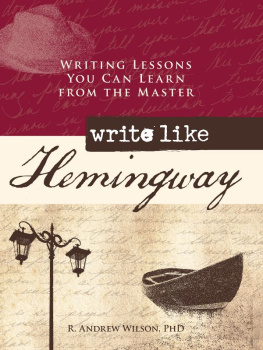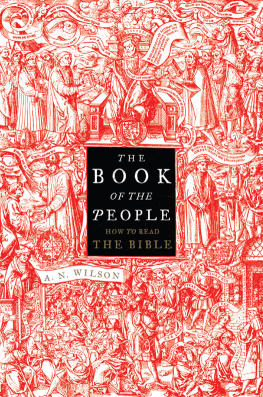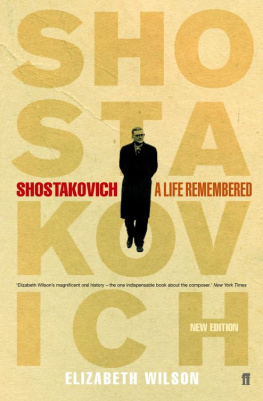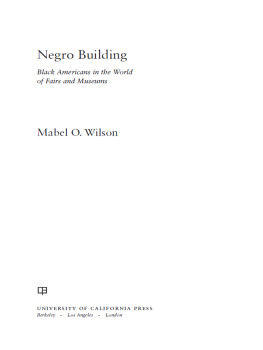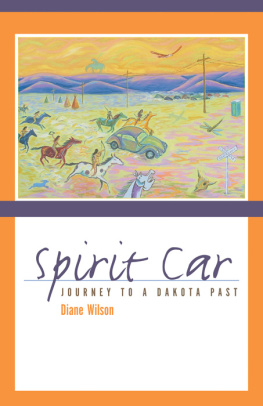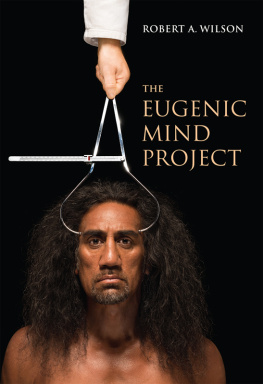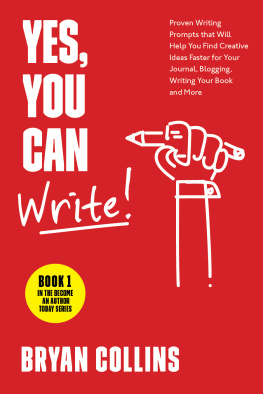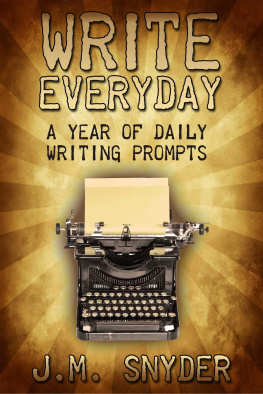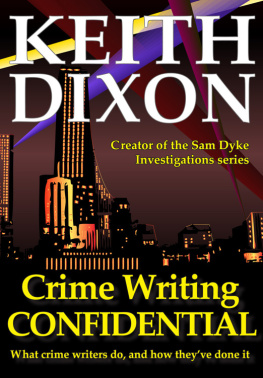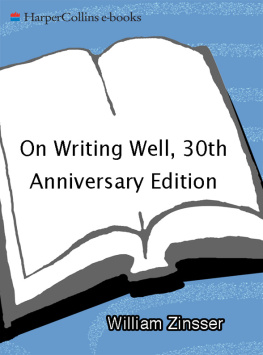
WRITING LESSONS
YOU CAN LEARN
FROM THE MASTER
write like
Hemingway
R. ANDREW WILSON, PHD

Copyright 2009 by F+W Media, Inc.
All rights reserved.
This book, or parts thereof, may not be reproduced in any form without permission from the publisher; exceptions are made for brief excerpts used in published reviews.
Published by
Adams Media, a division of F+W Media, Inc.
57 Littlefield Street, Avon, MA 02322. U.S.A.
www.adamsmedia.com
ISBN-10: 1-59869-896-6
ISBN-13: 978-1-59869-896-1
eISBN: 978-1-44051-415-9
Printed in the United States of America.
J I H G F E D C B A
Library of Congress Cataloging-in-Publication Data
is available from the publisher.
This publication is designed to provide accurate and authoritative information with regard to the subject matter covered. It is sold with the understanding that the publisher is not engaged in rendering legal, accounting, or other professional advice. If legal advice or other expert assistance is required, the services of a competent professional person should be sought.
From a Declaration of Principles jointly adopted by a Committee of the
American Bar Association and a Committee of Publishers and
Associations
Many of the designations used by manufacturers and sellers to distinguish their product are claimed as trademarks. Where those designations appear in this book and Adams Media was aware of a trademark claim, the designations have been printed with initial capital letters.
This book is available at quantity discounts for bulk purchases.
For information, please call 1-800-289-0963.
The published works of Ernest Hemingway are protected fully by United States and International Copyright Law. Grateful acknowledgment is given for the permission to reprint:
Excerpts from By-Line: Ernest Hemingway , edited by William White: Copyright 1933, 1934 by Ernest Hemingway. Copyright renewed 1961, 1962 by Mary Hemingway. Reprinted with the permission of Scribner, a Division of Simon & Schuster, Inc.
Excerpts from Death in the Afternoon by Ernest Hemingway: Copyright 1932 by Charles Scribners Sons. Copyright renewed 1960 by Ernest Hemingway. Reprinted with the permission of Scribner, a Division of Simon & Schuster, Inc.
Excerpts from Ernest Hemingway: Selected Letters, 19171961 , edited by Carlos Baker: Copyright 1981 by The Ernest Hemingway Foundation, Inc. Reprinted with the permission of Scribner, a Division of Simon & Schuster, Inc.
Excerpt from A Farewell to Arms by Ernest Hemingway: Copyright 1929 by Charles Scribners Sons. Copyright renewed 1957 by Ernest Hemingway. Reprinted with the permission of Scribner, a Division of Simon & Schuster, Inc.
Excerpt from For Whom the Bell Tolls by Ernest Hemingway: Copyright 1940 by Ernest Hemingway. Copyright renewed 1968 by Mary Hemingway. Reprinted with the permission of Scribner, a Division of Simon & Schuster, Inc.
Excerpts from Green Hills of Africa by Ernest Hemingway: Copyright 1935 by Charles Scribners Sons. Copyright renewed 1963 by Mary Hemingway. Reprinted with the permission of Scribner, a Division of Simon & Schuster, Inc.
Excerpts from Interview with Ernest Hemingway from The Art of Fiction No. 21 by George Plimpton, The Paris Review , Issue 18, Spring 1958: Copyright 1958 by The Paris Review . Reprinted with permission of The Wylie Agency LLC.
Excerpts from A Moveable Feast by Ernest Hemingway: Copyright 1964 by Mary Hemingway. Copyright renewed 1992 by John H. Hemingway, Patrick Hemingway, and Gregory Hemingway. Reprinted with the permission of Scribner, a Division of Simon & Schuster, Inc.
Excerpts from On Writing from The Nick Adams Stories by Ernest Hemingway: Copyright 1972 by The Ernest Hemingway Foundation. Reprinted with the permission of Scribner, a Division of Simon & Schuster, Inc.
Excerpts from The Short Stories of Ernest Hemingway by Ernest Hemingway: Copyright 1925, 1927, 1930, 1933 by Charles Scribners Sons. Copyright renewed 1953, 1955, 1958, 1961 by Ernest Hemingway. Copyright 1927, 1932, 1933 by Ernest Hemingway. Copyright renewed 1955, 1960, 1961 by Ernest Hemingway. Copyright 1933 by Charles Scribners Sons. Copyright renewed 1961 by Mary Hemingway. Copyright 1933, 1936, 1938 by Ernest Hemingway. Copyright renewed 1961, 1964, 1966 by Mary Hemingway. Reprinted with the permission of Scribner, a Division of Simon &Schuster, Inc.
Excerpts from The Sun Also Rises by Ernest Hemingway: Copyright 1926 by Charles Scribners Sons. Copyright renewed 1954 by Ernest Hemingway. Reprinted with the permission of Scribner, a Division of Simon & Schuster, Inc.
Dedication
For Jennifer
Acknowledgments
This book presumes that any act of writing is strongly influenced by both the people around an author and the models to whom he looks for guidance. Im grateful first of all to Ernest Miller Hemingway. Without Papas dedication to the writing craft and his inestimable talents, generations of writers would be lesser than they are. Jennifer Kushnier, my wife, encouraged me early on, critiqued a first draft, and offered thoughtful feedback throughout the writing process. The folks at Adams Media proved invaluable at making this book a realityespecially Paula Munier, who proposed the initial idea; Wendy Simard, my editor; Matthew Glazer; Richard Wallace, Colleen Cunnigham, and Michelle Kelly. Mitchell A. Smolow provided sound legal advice and is a good friend to have amidst a whitewater rapid. T. Kenneth Wilson was an early mentor who helped me appreciate the art of a Hemingway sentence.
Contents
1: The Education of Ernest Hemingway:
How a Nobel Laureate Learned to Write
2: A Lean, Well-Honed Style:
Writing Through Papas Voice
3: An Immovable Life:
The Forging of a Character
4: Dialogue:
Or, Having Your Characters Do Things with Words
5: The Green Hills of Hemingway:
Setting and Description
6: For Whom the Storys Told:
Plotted Fictions
Papa Hemingway,
Writer of the World
Preface
I cant think of any other in history who directly influenced so many writers. Especially young writers.
(John OHara on Hemingways legacy, New York Times, 3 July 1961)
Sitting atop a peak in New Hampshires Presidential Range shows you just how flawed human eyesight can be. From the mountains base, its sides seem to ascend in elegant slabs. At the summit, however, you see the rocky shoulders for what they are: piles of stacked rubble. Each rock comes at blunted, odd points. Each boulders skin is calloused, coarse. They hold the centuries of wear from White Mountain winters. Finding your balance is difficult. Sitting is uncomfortable.
I realize that I was seeing this mountainscape in the way that Ernest Hemingway taught me. Not as a grand, sweeping picture, but as piece built upon piece. Rock upon rock. Sensation upon sensation. I think of the opening of For Whom the Bell Tolls , Robert Jordan lying along a mountainside and watching the dark road that hes to block the Fascists from taking.
Looking out across a forested ravine, I see the Mount Washington Auto Road in the distance. Its black surface shines in the morning sunlight. Lone clouds had passed through earlier, sprinkling the ridges. The Auto Road isnt busy just yet, but by afternoon trains of tourists will follow it to the summit. Theyll park their cars, get out, enjoy the view. Enjoy lunch. Theyll come down with a bumper sticker.
That view is worth taking in. These sights are why I bother using a different route up. The climb by foot, backpack weighing on your shoulders, forces you to slow down. Unhurried by traffic, you take in each tree. Each rock. Each animal. Its the way one of Hemingways sentences forces you to slow down. Take in the details. Hemingway may not have been on this peak, but his way of seeing the world has.
Next page
